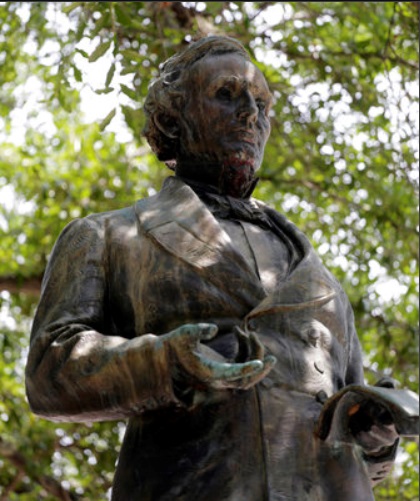Dear Commons Community,
The lead New York Times editorial (entire text appears below) today is a plea for the U.S. Congress to simplify the Free Application for Federal Student Aid, better known as Fafsa. This is long overdue and the fact that it is the subject of a Times editorial is indicative of the need to unburden students and their parents from this horror of an application form. Fafsa has 105 questions and 88 pages of instructions making it “as torturous and perplexing as a federal income tax form”. The editorial refers to Susan Dynarski, a professor at the University of Michigan, who comments that the information needed to calculate eligibility for aid is already collected by the Internal Revenue Service. In a simplified system, she says, tax filers could just check a box on their 1040 and immediately learn of their eligibility for federal grants and loans.”
What a relief it would be for students and parents to be able to bypass the Fafsa. Please, do something Congress!
Tony
=======================================
New York Times
Time to Fix the Fafsa
By THE EDITORIAL BOARD AUG. 27, 2015
Is Congress finally ready to pass legislation that would make it easier for harried parents and students to apply for federal financial aid?
Legislators and the Department of Education have been trying for years to radically simplify the standard form, known as the Free Application for Federal Student Aid, or Fafsa. But every time they cut a few questions, they add a few more. Today the Fafsa has 105 questions and 88 pages of instructions, making it as torturous and perplexing as a federal income tax form. Research suggests that the sheer length of the form and the confusing instructions are a huge deterrent to families that need financial aid, especially low-income families sending a child to college for the first time.
President Obama has taken steps to simplify the form. But there is a limit on what he and the department can do without new legislation from Congress. Hence the interest generated by a bill introduced in January by Senator Lamar Alexander, Republican of Tennessee, and co-sponsored by Senator Michael Bennet, Democrat of Colorado, and seven other senators, mostly Republicans, that would reduce the form to a single postcard containing two questions: What is your family size? What was your household income two years ago?
Optimists believe the bill could be voted on and approved either this year or early next. A bill introduced in the House would also simplify the application process, albeit not quite as drastically.
Susan Dynarski, a professor at the University of Michigan, says that the information needed to calculate eligibility for aid is already collected by the Internal Revenue Service. In a simplified system, she says, tax filers could just check a box on their 1040 and immediately learn of their eligibility for federal grants and loans.
As a candidate, Mr. Obama had said he would allow families to apply “simply by checking a box on their tax form” authorizing the use of their tax information. His administration continues to espouse that as a goal. But for now, even without new legislation, his administration has reduced the number of questions on the form. It has introduced technology that allows students and parents to skip some questions, based on their answers to previous questions. And it has introduced a tool that allowed more than 10 million online applicants to automatically transfer their I.R.S data into the application form for the 2014-15 school year.
Of the more than one million high school seniors who do not fill out Fafsa each year, most would be eligible for Pell grant scholarships for low-income students. The administration says that its improvements have increased the number of students filling out Fafsa by about 30 percent, from 16.4 million in 2008-09 to 21.2 million in 2013-14, and that the time required to fill out the form has been sharply cut. The administration is planning to announce further simplification steps shortly.
A report issued last month by the Bill & Melinda Gates Foundation suggested several simplification measures with an ultimate goal of eliminating Fafsa entirely and basing eligibility for federal aid on income information provided to the I.R.S.
Research by Professor Dynarski and her colleagues showed that eliminating most of the questions would have very little impact on the final aid decision, but would greatly increase the number of students applying. Counseling is a crucial part of the process. A field study by H&R Block showed that low-income people who received immediate assistance from their tax preparers, and a simplified process for completing the form, applied for aid in greater numbers and were more likely to complete two years of college than those who got no assistance.
There is a potential downside to reducing the application to two questions or no questions at all. Some institutions and some states want information that would not be provided by the two questions, like whether a family has substantial assets that could be sold to finance higher education, or how long an applicant has lived in a state. All parties — federal, state and institutional — will need to think hard about what information they really need and how best to keep the number of questions to a minimum.





